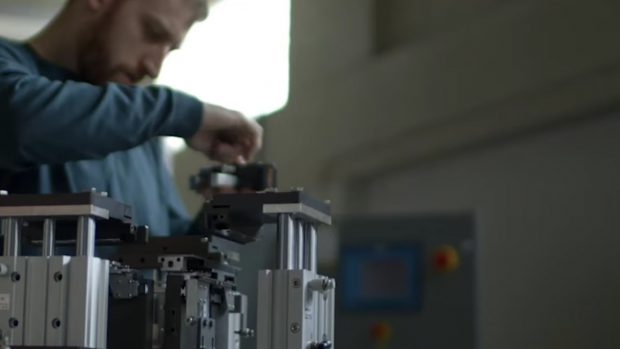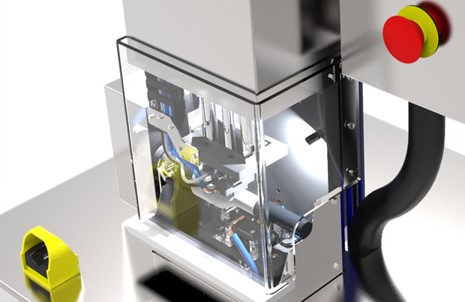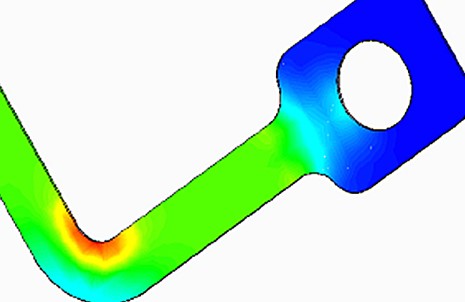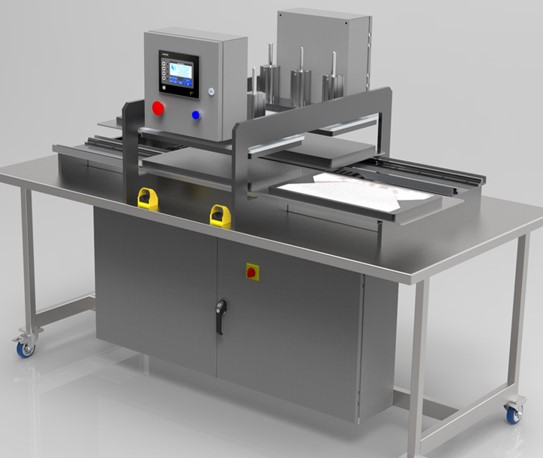Latest News
May 1, 2018
By Bob Mileti
At Trlby, we have been using Siemens CAD software since 2001. In business for 34 years, our business is a diversified product design, development and manufacturing company based in Torrington, CT. We are experts at heat-sealing thermoplastics, including polyethylene, polypropylene and other polyolefin materials, and we provide product design and development services to our customers in the medical, pharmaceutical, food/beverage and consumer goods markets.
A contract can often be multiyear and run from hundreds of thousands to millions of dollars; as a small business, account renewal and expansion are critical to our success. We rely heavily on our ability to secure repeat business and on our reputation for doing so. For new customers, I have to convince them of the viability of the proposed design solution, from concept straight through to production, in the initial presentation.
 Image courtesy of Mentor.
Image courtesy of Mentor.Trlby presentations have to be clear and compelling to both technical and nontechnical audiences. Many of the people who are making these big purchasing decisions are not on the ground doing the work with you. They are higher up; whoever is signing the check has less direct project knowledge but they also need to be convinced that we can solve their challenges. And once we win a contract, we must deliver designs, equipment and products on time.
The right tools help us do all that. I’m excited that Siemens and Mentor Graphics have embedded CFD into CAD. Being able to simulate flow and heat analysis in our projects helps us show customers early in our relationship how our product design suits their needs and do so in detail.
More Ways to Meet Customers’ Needs
Many of our customers come to us by recommendation. We are experts in figuring out impulse heat-sealing challenges, as well as difficult to seal materials, or shapes or often a combination of both. We help develop that product and then build the tooling and equipment for manufacturing it.
 Image courtesy of Mentor.
Image courtesy of Mentor.For example, we are working on a custom machine that will be making the “bags” for a medical device battery pouch. The product consists of a cathode, a foil laminated with carbon that is in a pouch of material that separates it from the lithium; it’s charged through the electrolyte to create power.
The machine we designed can make five different sizes of these pouches, and in this case, the heart of the machine is the heat sealing. We use a stainless steel alloy like a ribbon, similar to the filament in an incandescent bulb. When you apply power, it heats up, but we use controllers that let us monitor the element’s temperature. For these lithium batteries, we heat seal at about 340F. The controller will allow us to pour energy into that element to heat it up in a matter of 200 to 300 ms. When it reaches that temperature, the polymers melt. The molecular chains of the polymer will then blend and intertangle with their neighbors; then as they cool, the polymer basically becomes a solid again, creating the seal.
We try to anticipate how much energy we need to use, how much time we need to seal, the size of the element and the design of the element. This is where the thermal simulation software in CAD becomes very useful. It allows us to experiment with the shapes of the tooling and elements without having to actually make them.
 Image courtesy of Mentor.
Image courtesy of Mentor.This particular machine also cuts while doing the sealing. Each size of bag has a specific element designed to cut the outer edge and seal the inner edge; a little bit more pressure is applied to the outside edge. When this is done, the sealed plastic is about a thousandth of an inch thick. Our method creates a seal that’s only three to five thousandths of an inch wide but is actually stronger than the original substrate.
The thermal simulation software FloEFD helps us to understand how that element is going to behave when we fire it up with a certain amount of electricity, voltage and amperage to ensure there are no hot spots and that it performs as intended.
With simulation and analysis, we are able to data log all of this information, how hot the element got, how long it was on, how long it cooled down and what the pressure was. This allows us to “virtually” prove out an element design, eliminating the costly and time-consuming trial-and-error process of making actual physical elements.
The software is also a valuable sales tool because we can use it to present to a customer the simulation of the successful element design. When customers invest, for example, $275,000 into a machine we’re building and pay a 50% deposit upfront, they need to be able to have the confidence that in four to six months, we’ll have a machine that will do what we say it will do.
 Image courtesy of Mentor.
Image courtesy of Mentor.Once the equipment is complete, thermal analysis serves as the standard, and Trlby-built equipment is able to log the data relevant to the heating elements’ performance (temperature, dwell time, cooling time). For every cycle, we can supply our customer with the information that satisfies their FDA requirements.
Benefiting From CFD Inside CAD
The biggest reason I chose FloEFD for thermal simulation is because it’s fully embedded into Solid Edge. That meant a tremendous amount to me. With this combination, I can focus on analyzing the details of temperature distribution and run different scenarios early on while I’m designing “frontloading” CFD as they say. I can quickly modify and optimize the design’s geometry inside the CAD program if I need to make changes based on the thermal simulation results. The software provides all the phases of analysis in one package that I can access from the CAD menu, from solid modeling to problem setup, solving, visualizing results, optimizing the design and reporting.
I looked at a lot of other CFD packages but they were designed for physicists, meaning the guys who learned all of this in college, did it professionally, and who understand how to use the software from a scientific standpoint. What I liked about Mentor was that the developers know their customers—mechanical engineers or designers like myself. I’m creative, and I’m trying to solve problems. I like how the software is presented in more of a layman’s approach, easy to understand. I want to know that the scientific background is there in the tool, but I want to be able to understand quickly how to use the software, and be able to explain its capabilities.
Does easy to use mean less powerful? This software is an extremely powerful tool for me as both a designer and a business owner.
I love it when I’m giving a presentation to a customer and their team includes a handful of engineers and financial people, maybe even the president of the company, and it’s the financial people who are most excited because they’ve understood the proof of concept; being able to see the heat transfer in a visual simulation really resonates with them.
Bob Mileti is president and founder of Trlby Innovative, LLC.
Subscribe to our FREE magazine, FREE email newsletters or both!
Latest News






